Multiple Dimensions
| Home Page |
Math Portal |
Numbers & Operations |
Algebra |
Geometry |
Trigonometry |
Pre-Calculus |
Calculus |
Multiple Dimensions |
Set Theory |
Statistics |
| 79865 |
45962 |
20137 |
2106 |
3923 |
87 |
1837 |
39961 |
2667 |
1433 |
2098 |
| Math Involved:
| Lines
| Planes
| Distances
| Mid-Points
| Angles
| Areas
|
| Tesseract, Cube, Square
| Image
| Video
| Coordinates
| Characteristics
|
| Tetrahedron, Triangle
| Images
| Coordinates
| Characteristics
| Useful Facts
|
| Other 3d Platonic Solids:
| Octahedron (8 sided)
| Dodecahedron (12 sided)
| Icosohedron (20 sided)
|
| Sphere, Circle
|
http://www.coolmath4kids.com/polyhedra/index.html
Math Involved
Lines
The relationship between any two dimensional values of a line in multiple dimensions is linear, so the equation of a four dimensional line can be defined by this set of equations (Certain combinations of three of the equations define the line, such as the upper three. The other equations are extra equations that are also true statements):
x=m1y+b1
y=m2x+b2
x=m3z+b3
y=m4z+b4
z=m5x+b5
z=m6y+b6
x=m7a+b7
y=m8a+b8
z=m9a+b9
a=m10x+b10
a=m11y+b11
a=m12z+b12
Another form of an equation of a line in multiple dimensions is:
[x,y,z,a]=x*[1,m1,m2,m3]+[0,b1,b2,b3]
which can be simplified to:
[y,z,a]=x*[m1,m2,m3]+[b1,b2,b3]
Planes
The equation of a plane in three dimensions is:
z=m*x+n*y+b
whereas x, y, and z are variables and m, n, and b are constants.
The equation of a plane in multiple dimensions is:
[x,y,z,a]=x*[1,0,m1,m2]+y*[0,1,n1,n2]+[0,0,b1,b2]
which can be simplified to:
[z,a]=x*[m1,m2]+y*[n1,n2]+[b1,b2]
Cubicals
The equation of a cubical in four dimensions is:
a=m*x+n*y+p*z+b
whereas x, y, z, and 'a' are variables and m, n, p, and b are constants.
The equation of a cubical in multiple dimensions is:
[x,y,z,a,c]=x*[1,0,0,m1,m2]+y*[0,1,0,n1,n2]+z*[0,0,1,p1,p2]+[0,0,0,b1,b2]
which can be simplified to:
[a,c]=x*[m1,m2]+y*[n1,n2]+z*[p1,p2]+[b1,b2]
Distances
Coordinates are listed in the form of (x,y,z,a,b,c,d,...) depending on how many dimensions are used. (3,4,0,0) is equivalent to (3,4). (5,0) is equivalent to (5).
To find the distance between two points that are given coordinates, let d=distance and use the equation d = √((x1-x2)2+(y1-y2)2+(z1-z2)2+(a1-a2)2+...).
Proof of the distance formula for three dimensions:
Let there be the two points J(a,b,c) and K(d,e,f).
'd' is defined the distance from J to K to be solved.
K-J=(0,0,0)-(K-J)=(x,y,z); The distance from K to J is the same as the distance from (0,0,0) to (K-J).
Let 'p' equal the distance from (0,0,0) to (x,y,0)
p=√(x^2+y^2)
The angle from (0,0,0) to (x,y,0) to (x,y,z) is 90 degrees with its hypotenuse the length 'd'.
d=√(p^2+z^2)
substitute: d=√((√(x^2+y^2))^2+z^2)
symplify: d=√(x^2+y^2+z^2)
substitute: d=√((a-d)^2+(b-e)^2+(c-f)^2)
dist(A,B)=sqrt(sum((A-B)^2))
Mid-Points, Third-Points, and Twice-Points, etc.
To find the coordinate half or 1/3 or 5 times or v times the distance from (x1,y1,z1,a1) to (x2,y2,z2,a2) use the formulas:
x3 = (x2-x1)*v+x1
y3 = (y2-y1)*v+y1
z3 = (z2-z1)*v+z1
a3 = (a2-a1)*v+a1
or use the combined single formula:
{x3,y3,z3,a3} = ({x2,y2,z2,a2}-{x1,y1,z1,a1})*v+{x1,y1,z1,a1}
mid(A,B)=(A+B)/2
vMid(A,B,v)=(B-A)*v+A
Angles
dist(P,R)=PR
To find the shortest angle between two segments which are connected by one point (if you know their coordinates), use the distance formula to find the distances between each of the three points and then use the law of cosines to find the angle.
For example, the angle from P(x1,y1,z1,a1) to the corner Q(x2,y2,z2,a2) to R(x3,y3,z3,a3) can be calculated by the formula cos-1((PR2-QP2-QR2)/(-2*QP*QR)).
After substituting in the exact distances and symplifying, the formula becomes cos-1(((x1-x3)2+(y1-y3)2+(z1-z3)2+(a1-a3)2)-(x1-x2)2-(y1-y2)2-(z1-z2)2-(a1-a2)2)-(x2-x3)2-(y2-y3)2-(z2-z3)2-(a2-a3)2))/(-2*√(((x1-x2)2+(y1-y2)2+(z1-z2)2+(a1-a2)2)*((x2-x3)2+(y2-y3)2+(z2-z3)2+(a2-a3)2)))).
Note that the range of the output (the angle) is [0,180] while not including (180,360).
angle(P,Q,R)=cos-1(sum((P-R)^2-(P-Q)^2-(Q-R)^2)/(-2*sqrt(sum((P-Q)^2+(Q-R)^2))))
Area of triangle
Given points
A(x1,y1,z1) B(x2,y2,z2) C(x3,y3,z3)
These are only true if the liine from point C to the point inbetween A and B is tangent to the line from A to B:
dist(A,B)*dist(mid(A,B),C)/2=area
sqrt(sum((A-B)^2)*sum(((A+B)/2-C)^2))/2=area
True for any triangle:
When the derivative of the distance between the point and the base line is 0; the minimax of the distance between the point and the base line.
Given 3 lengths
a,b,c
area=sqrt(2*((a*b)^2+(a*c)^2+(b*c)^2)-a^4-b^4-c^4)/4=c*b*sqrt(1-((b^2+c^2-a^2)/(2*b*c))^2)/2
Given 1 angle and 2 lengths
θ=C,a,b
sin(θ)*a*b/2=area
Given 2 angles and 1 length
θ1=A,θ2=B,c
c^2*sin(θ2)*sin(θ1)/(2*sin(θ1+θ2))=area
Comprehensive Overview
Number of points that make hedrons in multiple dimensions
| | 0 | 1 | 2 | 3 | 4
|
| 0 | 1 | | | |
|
| 1 | 2 | | | |
|
| 2 | 3 | 4 | 5 | 6 | 7
|
| 3 | 4 | 6 | 8 | 12 | 20
|
| 4 | 5 | | | 16 |
|
Number of segments (lines) that make hedrons in multiple dimensions
| | 0 | 1 | 2 | 3 | 4
|
| 0 | 0 | | | |
|
| 1 | 1 | | | |
|
| 2 | 3 | 4 | 5 | 6 | 7
|
| 3 | | | | |
|
| 4 | | | | |
|
Number of faces (planes or areas) that make hedrons in multiple dimensions
| | 0 | 1 | 2 | 3 | 4
|
| 0 | 0 | | | |
|
| 1 | 0 | | | |
|
| 2 | 1 | 1 | 1 | 1 | 1
|
| 3 | 4 | 6 | 8 | 12 | 20
|
| 4 | 5 | | | 16 |
|
Number of volumes that make hedrons in multiple dimensions
| | 0 | 1 | 2 | 3 | 4
|
| 0 | 0 | | | |
|
| 1 | 0 | | | |
|
| 2 | 0 | 0 | 0 | 0 | 0
|
| 3 | 1 | 1 | 1 | 1 | 1
|
| 4 | 5 | 8 | | |
|
Number of d-1 that make hedrons in multiple dimensions
| | 0 | 1 | 2 | 3 | 4 | 5
|
| 0 | | | | | |
|
| 1 | 2 | | | | |
|
| 2 | 3 | 4 | 5 | 6 | 7 | 8
|
| 3 | 4 | 6 | 8 | 12 | 20 |
|
| 4 | 5 | 8 | 16 | 24 | 120 | 600
|
http://www.webdragon.com/geometry/4dtetri.html
http://www.webdragon.com/geometry/shapes.html
Top of Page
Tesseract
Image
A 3d image of a 4d tesseract, constructed with toothpicks.
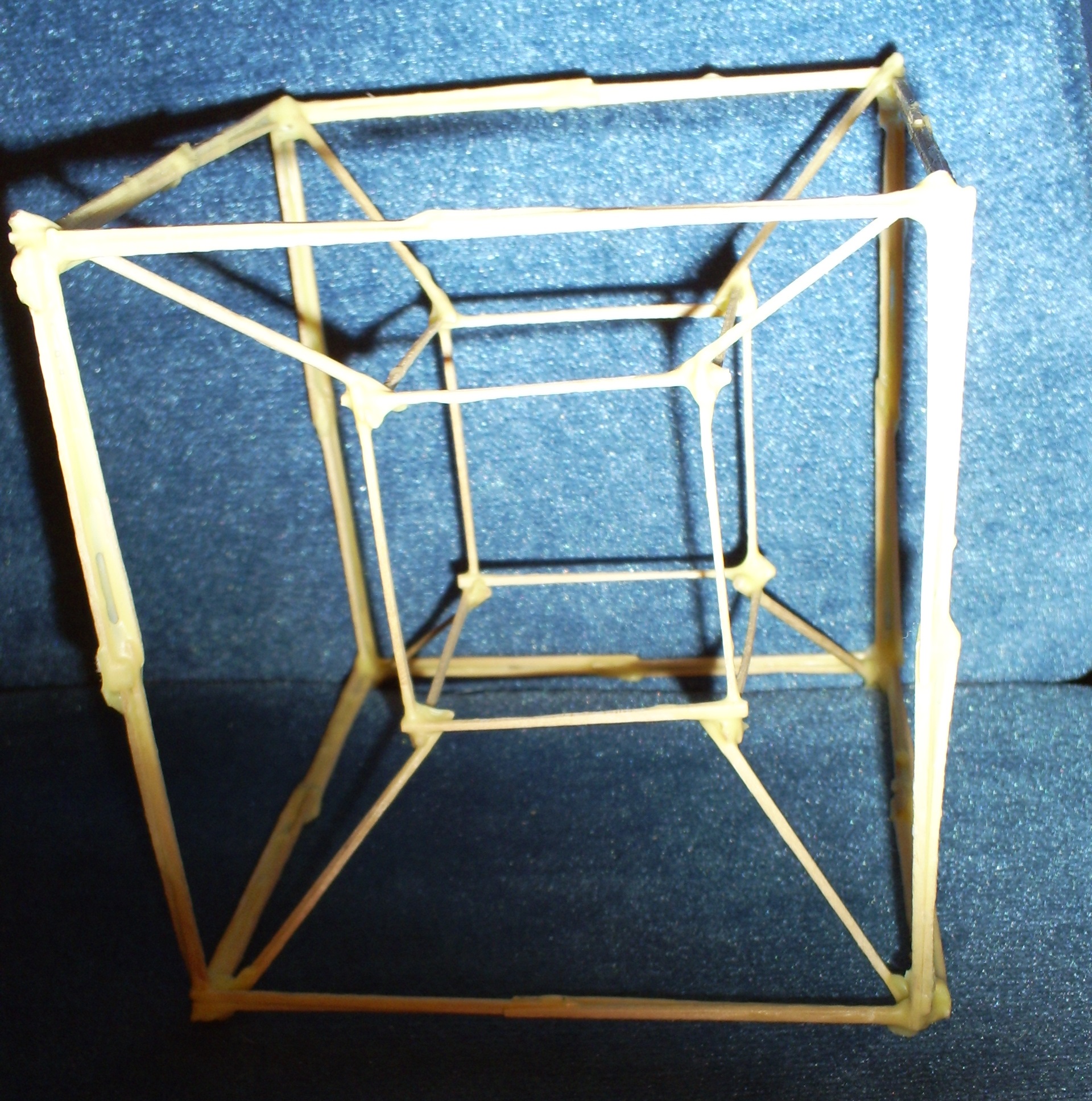
Video
This video shows a tesseract rotating through the fourth dimention. A tesseract is a four dimensional cube.
Coordinates
Four dimensions of space means that there are four axis. Coordinates are written in the form (x,y,z,a).
Another name for a tesseract is an octaholohedron meaning: 8 three-dimensional sides (http://www.webdragon.com/geometry/4docta.html).
The points, lines and areas of a tesseract are:
| label
| x
| y
| z
| a
|
| A
| 0
| 0
| 0
| 0
|
| B
| 1
| 0
| 0
| 0
|
| C
| 0
| 1
| 0
| 0
|
| D
| 1
| 1
| 0
| 0
|
| E
| 0
| 0
| 1
| 0
|
| F
| 1
| 0
| 1
| 0
|
| G
| 0
| 1
| 1
| 0
|
| H
| 1
| 1
| 1
| 0
|
| I
| 0
| 0
| 0
| 1
|
| J
| 1
| 0
| 0
| 1
|
| K
| 0
| 1
| 0
| 1
|
| L
| 1
| 1
| 0
| 1
|
| M
| 0
| 0
| 1
| 1
|
| N
| 1
| 0
| 1
| 1
|
| O
| 0
| 1
| 1
| 1
|
| P
| 1
| 1
| 1
| 1
|
|
| Label
| Segment
|
| 1
| AB
|
| 2
| AC
|
| 3
| CD
|
| 4
| BD
|
| 5
| EF
|
| 6
| EG
|
| 7
| FH
|
| 8
| GH
|
| 9
| AE
|
| 10
| BF
|
| 11
| CG
|
| 12
| DH
|
|
| Label
| Segment
|
| 13
| IJ
|
| 14
| IK
|
| 15
| JL
|
| 16
| KL
|
| 17
| MN
|
| 18
| MO
|
| 19
| NP
|
| 20
| OP
|
| 21
| IM
|
| 22
| JN
|
| 23
| KO
|
| 24
| LP
|
|
| Label
| Segment
|
| 25
| AI
|
| 26
| BJ
|
| 27
| CK
|
| 28
| DL
|
| 29
| EM
|
| 30
| FN
|
| 31
| GO
|
| 32
| HP
|
|
| Label
| Area
|
| 1
| ABDC
|
| 2
| EFHG
|
| 3
| ABFE
|
| 4
| CDHG
|
| 5
| ACGE
|
| 6
| BDHF
|
| 7
| IJLK
|
| 8
| MNPO
|
| 9
| KLPO
|
| 10
| IJNM
|
| 11
| IKOM
|
| 12
| JLPN
|
|
| Label
| Area
|
| 13
| ABIJ
|
| 14
| CDLK
|
| 15
| ACKI
|
| 16
| BDLJ
|
| 17
| EFNM
|
| 18
| GHPO
|
| 19
| EGOM
|
| 20
| FHPN
|
| 21
| AEMI
|
| 22
| CGOK
|
| 23
| BFNJ
|
| 24
| DHPL
|
|
As you can see the coordinates look just like binary code.
Characteristics
This table shows the number of lines, areas, volumes, four dimensional volumes, ... in the point-to-line-to-square-to-cube-to-tesseract pattern.
| y
| Dimensions
| -1
| 0
| 1
| 2
| 3
| 4
| 5
| 6
| 7
| x
|
| -1
|
| 0
| 0
| 0
| 0
| 0
| 0
| 0
| 0
| 0
| 0
|
| 0
| Points
| 1/2
| 1
| 2
| 4
| 8
| 16
| 32
| 64
| 128
| 2x
|
| 1
| Segments
| -1/4
| 0
| 1
| 4
| 12
| 32
| 80
| 192
| 448
| x*2x/(1!*21)
|
| 2
| Areas
| 1/8
| 0
| 0
| 1
| 6
| 24
| 80
| 240
| 672
| (x-1)*x*2x/(2!*22)
|
| 3
| Volumes
| -1/16
| 0
| 0
| 0
| 1
| 8
| 40
| 160
| 560
| (x-2)*(x-1)*x*2x/(3!*23)
|
| 4
| 4D volumes
| 1/32
| 0
| 0
| 0
| 0
| 1
| 10
| 60
| 280
| (x-3)*(x-2)*(x-1)*x*2x/(4!*24)
|
| 5
| 5D volumes
| -1/64
| 0
| 0
| 0
| 0
| 0
| 1
| 12
| 84
| (x-4)*(x-3)*(x-2)*(x-1)*x*2x/(5!*25)
|
| 6
| 6D volumes
| 1/128
| 0
| 0
| 0
| 0
| 0
| 0
| 1
| 14
| (x-5)*(x-4)*(x-3)*(x-2)*(x-1)*x*2x/(6!*26)
|
| 7
| 7D volumes
| -1/256
| 0
| 0
| 0
| 0
| 0
| 0
| 0
| 1
| (x-6)*(x-5)*(x-4)*(x-3)*(x-2)*(x-1)*x*2x/(7!*27)
|
Formula
This formula is used to calculate each of the equations in the table: ∑(2t-1*fv(x-t),t=1,x)→fv+1(x); f0(x)=2x
This formula is used to find the value of any cell if given its x and y coordinates in the table: ∏(x-t,t=0,y)*2x/(y!*2y)
Another pattern of the data is:
Top of Page
Tetrahedron
Images
images of tetrahedrons of different dimensions
| 0d | 1d | 2d | 3d | 4d |
 |
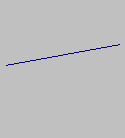 |
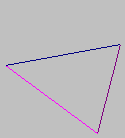 |
 |
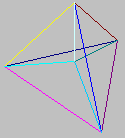 |
| 1 |
length=1*height/1=height |
area=baselength*height/2 |
volume=basearea*height/3 |
4d_volume=basevolume*height/4 |
| 1 |
length=edgelength |
area=edgelength2*sqrt(3)/22 | =edgelength2*sqrt(3)/4
volume=edgelength3*sqrt(18)/(22*32) =edgelength3*sqrt(2)/12 |
4d_volume=edgelength4*sqrt(180)/(22*32*42) =edgelength4*sqrt(5)/96 |
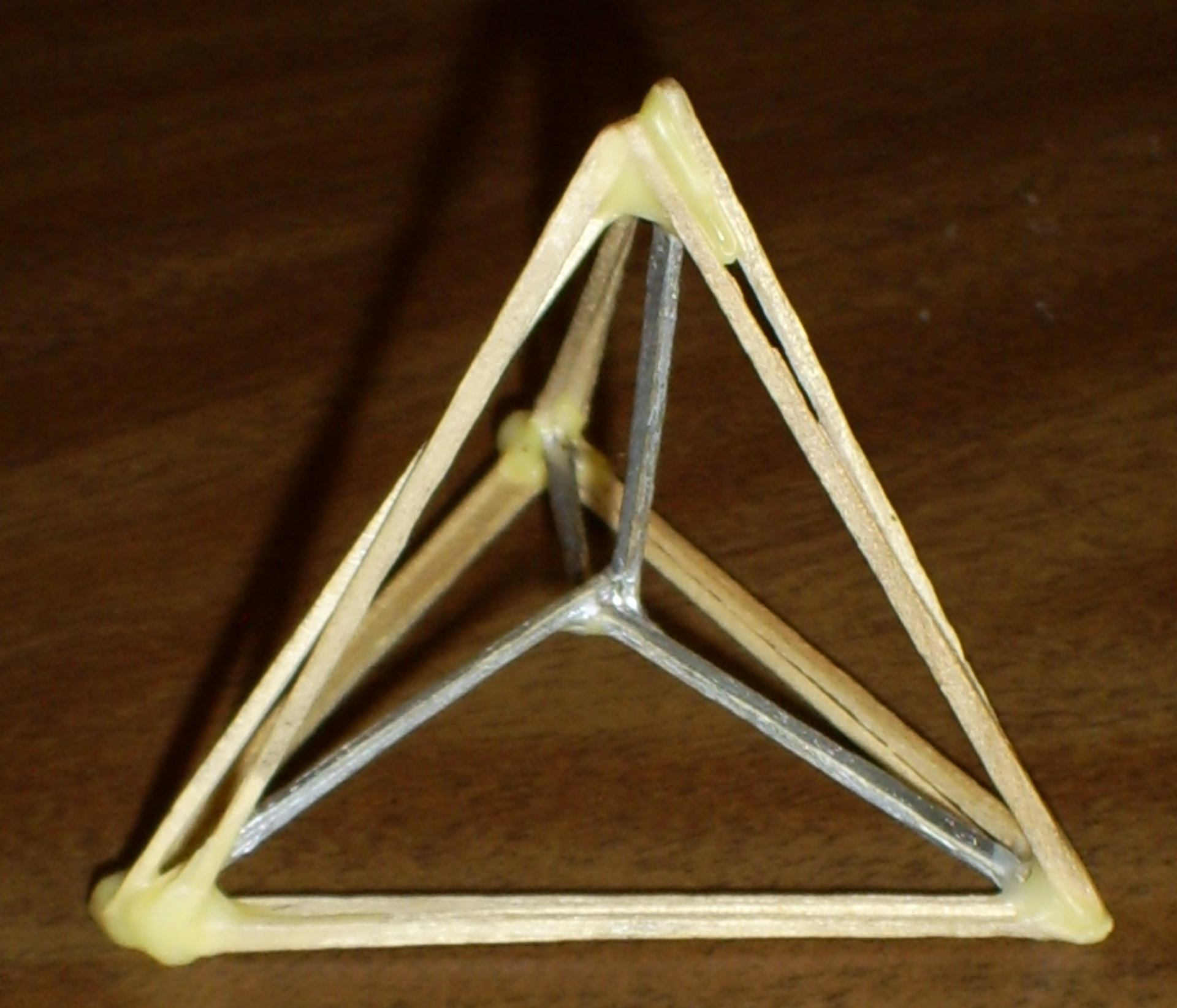
Coordinates
Every point in a tetrahedron are connected to all the other points of the tetrahedron. All the lengths between any two points in a tetrahedron are the same length. The shortest angle between any two lines is 60 degrees. There is always one more point than the number of dimensions used in a tetrahedron; For example, a three dimensional tetrahedron has four points. The coordinates for a six dimensional tetrahedron are:
| # of dimensions
| x
| y
| z
| a
| b
| c
|
| 0
| 0
| 0
| 0
| 0
| 0
| 0
|
| 1
| √(1)/1
| 0
| 0
| 0
| 0
| 0
|
| 2
| (√(1)/1)/2
| √(3)/2
| 0
| 0
| 0
| 0
|
| 3
| (√(1)/1)/2
| (√(3)/2)/3
| √(6)/3
| 0
| 0
| 0
|
| 4
| (√(1)/1)/2
| (√(3)/2)/3
| (√(6)/3)/4
| √(10)/4
| 0
| 0
|
| 5
| (√(1)/1)/2
| (√(3)/2)/3
| (√(6)/3)/4
| (√(10)/4)/5
| √(15)/5
| 0
|
| 6
| (√(1)/1)/2
| (√(3)/2)/3
| (√(6)/3)/4
| (√(10)/4)/5
| (√(15)/5)/6
| √(21)/6
|
This shows a simplified exact form:
| # of dimensions
| x
| y
| z
| a
| b
| c
|
| 0
| 0
| 0
| 0
| 0
| 0
| 0
|
| 1
| 1
| 0
| 0
| 0
| 0
| 0
|
| 2
| 1/2
| √(3)/2
| 0
| 0
| 0
| 0
|
| 3
| 1/2
| √(3)/6
| √(6)/3
| 0
| 0
| 0
|
| 4
| 1/2
| √(3)/6
| √(6)/12
| √(10)/4
| 0
| 0
|
| 5
| 1/2
| √(3)/6
| √(6)/12
| √(10)/20
| √(15)/5
| 0
|
| 6
| 1/2
| √(3)/6
| √(6)/12
| √(10)/20
| √(15)/30
| √(21)/6
|
There is a pattern with the gold shaded numbers. If the number of dimensions used is labled "x", and the new coordinate value is labled "y", then √(x(x+1)/2)/(x)=y. As x approaches infinity, y approaches √(2)/2. You can see how the numbers below the golden shaded numbers are calculated. They are the same as the gold shaded number above them, but divided by (1 + its dimensional coordinate). They approach 0 as the number of dimensions approach infinity.
The approximate points, rounded to the nearest ten thousandth, for a six dimensional tetrahedron are:
| # of dimensions
| x
| y
| z
| a
| b
| c
|
| 0
| 0
| 0
| 0
| 0
| 0
| 0
|
| 1
| 1
| 0
| 0
| 0
| 0
| 0
|
| 2
| 0.5
| 0.8660
| 0
| 0
| 0
| 0
|
| 3
| 0.5
| 0.2887
| 0.8165
| 0
| 0
| 0
|
| 4
| 0.5
| 0.2887
| 0.2041
| 0.7906
| 0
| 0
|
| 5
| 0.5
| 0.2887
| 0.2041
| 0.1581
| 0.7746
| 0
|
| 6
| 0.5
| 0.2887
| 0.2041
| 0.1581
| 0.1291
| 0.7638
|
Characteristics
This table shows the number of lines, areas, volumes, four dimensional volumes, ... in the point-to-line-to-triangle-to-tetrahedron pattern.
| y
| Dimensions
| -1 | 0 | 1 | 2 | 3 | 4 | 5 | 6 | 7
| x
|
| -1
| no existance?
| 1 | 1 | 1 | 1 | 1 | 1 | 1 | 1 | 1
| 1
|
| 0
| Points
| 0 | 1 | 2 | 3 | 4 | 5 | 6 | 7 | 8
| x+1
|
| 1
| Lines
| 0 | 0 | 1 | 3 | 6 | 10 | 15 | 21 | 28
| x*(x+1)/2!
|
| 2
| Areas
| 0 | 0 | 0 | 1 | 4 | 10 | 20 | 35 | 56
| (x-1)*x*(x+1)/3!
|
| 3
| Volumes
| 0 | 0 | 0 | 0 | 1 | 5 | 15 | 35 | 70
| (x-2)*(x-1)*x*(x+1)/4!
|
| 4
| 4D volumes
| 0 | 0 | 0 | 0 | 0 | 1 | 6 | 21 | 56
| (x-3)*(x-2)*(x-1)*x*(x+1)/5!
|
| 5
| 5D volumes
| 0 | 0 | 0 | 0 | 0 | 0 | 1 | 7 | 28
| (x-4)*(x-3)*(x-2)*(x-1)*x*(x+1)/6!
|
| 6
| 6D volumes
| 0 | 0 | 0 | 0 | 0 | 0 | 0 | 1 | 8
| (x-5)*(x-4)*(x-3)*(x-2)*(x-1)*x*(x+1)/7!
|
| 7
| 7D volumes
| 0 | 0 | 0 | 0 | 0 | 0 | 0 | 0 | 1
| (x-6)*(x-5)*(x-4)*(x-3)*(x-2)*(x-1)*x*(x+1)/8!
|
Formula
This formula is used to calculate each of the equations in the table: ∑(fv(t),t,1,x)→fv+1(x); f0(x)=x+1
This formula is used to find the value of any cell if given its x and y coordinates in the table: ∏(x-t,t=-1,y-1)/(y+1)! = x*(x+1)*(y-x)!*cos(180*y)/((x-y)*(-x!)*(y+1)*y!)
100*3!=600
Another pattern of the data is:
Useful Facts
Face-to-Face angle
If you form a triangle from points P(1/2,√(3)/6,√(6)/3) to Q(1/2,0,0) to R(1/2,√(3)/2,0) then the angles PQR=cos-1(1/3)≈70.5287793655° and QRP=RPQ=(180-cos-1(1/3))/2≈54.7356103172°.
Factorials by dividing Multi-dimensional volumes
Right tetrahedrons:
lim(∑((t/x)d,t-->1,x)/(f(x-1)*x),x-->infinity)→f(x)
0d: 1 * its point
1d: 1 * its length
2d: 1/2 its square
3d: 1/6 its cube
4d: 1/24 its tesseract
5d: 1/120 it 5d tesseract
Sliding
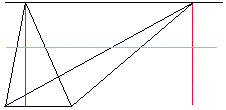 Each of the two triangles share the same base.
The red lines are the triangle's height; the heights are the same.
The length of the green line is the same in each triangle.
Therefore, the areas of both triangles is equal. .
Each of the two triangles share the same base.
The red lines are the triangle's height; the heights are the same.
The length of the green line is the same in each triangle.
Therefore, the areas of both triangles is equal. .
Any tetrahedron:
Length of segment = base(point) * height/1
Area of triangle = base(length) * height/2
Volume of tetrahedron = base(area) * height/3
Volume of 4d tetrahedron = base(volume) * height/4
Volume of 5d tetrahedron = base(4d volume) * height/5
The equation for the volume of a tetrahedron (base * height / 3) is the same as for a pyramid and cone; this is because they each have an area base that go to a single point in the third dimension.
Triangulation
 Each side of the triangle has a perpendicular line drawn. The point of intersection is where the center of the circle that has all three points of the triangle on it.
Each side of the triangle has a perpendicular line drawn. The point of intersection is where the center of the circle that has all three points of the triangle on it.
Top of Page
3D Octahedron
The octahedron has 1 volume, 8 areas, 12 lines, and 6 points.
volume=edge_length3*sqrt(2)/6
The octohedron can be constructed by taking the center points of the faces of a cube. This method applies to multiple dimensions too.
Top of Page
3d dodecahedron
The icosahedron is related to the dodecahedron. They each have 30 segments and 1 3D volume. The icosahedron has 20 faces (2d areas) and 12 vertices (0d points), while the dodecahedron is the opposite, having 12 faces (2d areas) and 20 vertices (0d points).
If you placed a point in the center of each area in one hedron, then took those points and connected them you would get the same shape of the other hedron.

The colored dots in the picture are there to help you fold it into a dodecahedron. The shaded areas are areas that overlap. Cut out the object. After cutting, and creasing a fold on each line, glue the shape together.
The angle made from area to area is cos-1(-(√(5)+1)*√(2)/(2*√(9*√(5)+25))) ≈ 109.915883287°.

Lengths
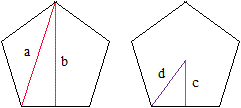
If each side of the pentagon is a length of 1 unit, then the lengths of the labled sides are written in the following table.
| label | exact length | approximate length
|
| a | (1+√(5))/2 | 1.61803398875
|
| b | (√(5+√(5))+√(5-√(5)))*√(2)/4 | 1.53884176859
|
| c | (1+√(5))*√(2)/(4*√(5-√(5))) | 0.688190960236
|
| d | √(2)/√(5-√(5)) | 0.850650808352
|
If each side of the pentagon is a length of (1+√(5))/2 units, then the lengths of the labled sides are written in the following table.
| label | exact length | approximate length
|
| a | (3+√(5))/2 | 2.61803398875
|
| b | (1+√(5))*(√(5-√(5))+√(5+√(5)))*√(2)/8 | 2.48989828488
|
| c | (3+√(5))*√(2)/(4*√(5-√(5))) | 1.11351636441
|
| d | (1+√(5))*√(2)/(2*√(5-√(5))) | 1.37638192047
|
Coordinates
This table shows the coordinates of the dodecahedron which has 12 faces.
| label | x | y | z
|
| A | 0 | 0 | 0
|
| B | 1 | 0 | 0
|
| C | (√(5)+3)/4 | √(2*(5+√(5)))/4 | 0
|
| D | 1/2 | (√(5+√(5))+√(5-√(5)))*√(2)/4 | 0
|
| E | (-√(5)+1)/4 | √(2*(5+√(5)))/4 | 0
|
| F | (1-√(5))/4 | -√(2)/(2*√(5-√(5))) | √(10*(5+√(5)))/10
|
| G | (√(5)+3)/4 | -√(2)/(2*√(5-√(5))) | √(10*(5+√(5)))/10
|
| H | (√(5)+5)/4 | (3+√(5))*√(2)/(4*√(5-√(5))) | √(10*(5+√(5)))/10
|
| I | 1/2 | (3+√(5)*3)*√(2)/(4*√(5-√(5))) | √(10*(5+√(5)))/10
|
| J | -(√(5)+1)/4 | (3+√(5))*√(2)/(4*√(5-√(5))) | √(10*(5+√(5)))/10
|
| K | 1/2 | -(1+√(5))*√(2)/(4*√(5-√(5))) | (√(5-√(5))+√(5+√(5)))*√(10)/10
|
| L | (√(5)+5)/4 | (√(5)-1)*√(2)/(4*√(5-√(5))) | (√(5-√(5))+√(5+√(5)))*√(10)/10
|
| M | (√(5)+3)/4 | (2+√(5))*√(2)/(2*√(5-√(5))) | (√(5-√(5))+√(5+√(5)))*√(10)/10
|
| N | (1-√(5))/4 | (2+√(5))*√(2)/(2*√(5-√(5))) | (√(5-√(5))+√(5+√(5)))*√(10)/10
|
| O | (-√(5)-1)/4 | (√(5)-1)*√(2)/(4*√(5-√(5))) | (√(5-√(5))+√(5+√(5)))*√(10)/10
|
| P | 1/2 | (√(5)-3)*√(2)/(4*√(5-√(5))) | (√(5-√(5))+2*√(5+√(5)))*√(10)/10
|
| Q | (√(5)+3)/4 | √(2)/(2*√(5-√(5))) | (√(5-√(5))+2*√(5+√(5)))*√(10)/10
|
| R | 1 | √(2)/(2*√(5-√(5)))+√(5+√(5))*√(2)/4 | (√(5-√(5))+2*√(5+√(5)))*√(10)/10
|
| S | 0 | √(2)/(2*√(5-√(5)))+√(5+√(5))*√(2)/4 | (√(5-√(5))+2*√(5+√(5)))*√(10)/10
|
| T | (-√(5)+1)/4 | √(2)/(2*√(5-√(5))) | (√(5-√(5))+2*√(5+√(5)))*√(10)/10
|
| center | 1/2 | (1+√(5))*√(2)/(4*√(5-√(5))) | (√(5-√(5))+2*√(5+√(5)))*√(10)/20
|
Top of Page
3d icosohedron
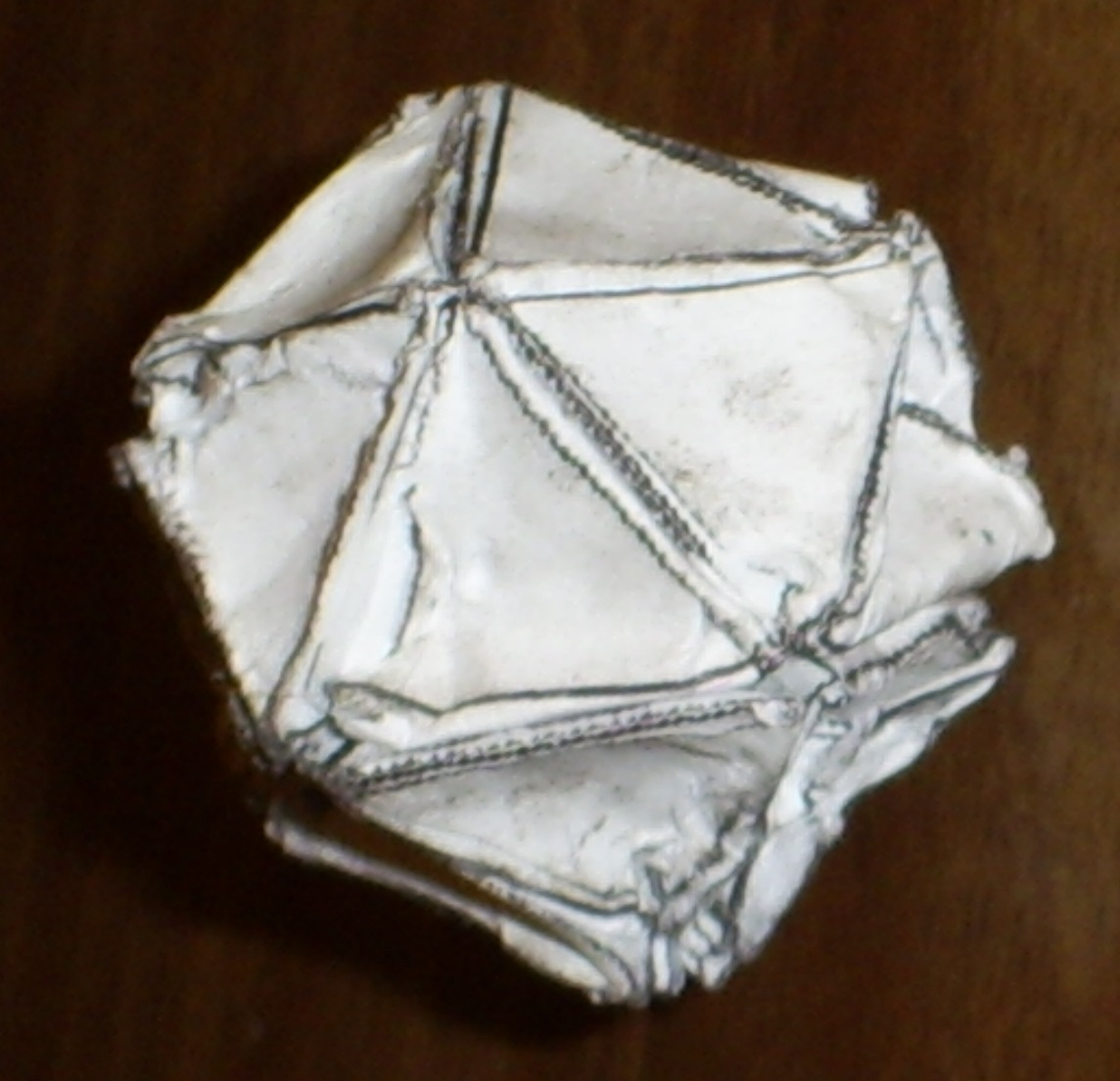 A way to make the icosohedron is to glue slightly irregular 3D tetrahedrons together around a comman point, the center of the icosohedron.
A way to make the icosohedron is to glue slightly irregular 3D tetrahedrons together around a comman point, the center of the icosohedron.
The colored dots in the picture are there to help you fold it into an icosohedron. The shaded areas are areas that overlap. Cut out the object and cut the red lines. After cutting, and creasing a fold on each line, glue the shape together.
The angle made from area to area is cos-1(-√(5)/3) ≈ 138.189685104°.
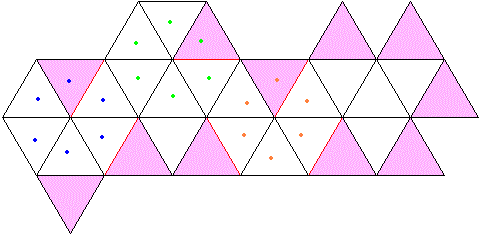
Coordinates

This table shows the coordinates of the upper (triagular) figure, which has 20 faces. These coordinates surround the center coodinate located at (1/2,√(3)/6,√(6)/3). The center of the 20 hedron is one unit away from each of its point.
| label | x | y | z
|
| A | 0 | 0 | 0
|
| B | 1 | 0 | 0
|
| C | (√(5)+3)/4 | √(2*(5+√(5)))/4 | 0
|
| D | 1/2 | (√(5+√(5))+√(5-√(5)))*√(2)/4 | 0
|
| E | (-√(5)+1)/4 | √(2*(5+√(5)))/4 | 0
|
| F | 1/2 | (√(5)+1)*√(2)/(4*√(5-√(5))) | √(10*(5-√(5)))/10
|
| G | 1/2 | (√(5)-3)*√(2)/(4*√(5-√(5))) | √(10*(5+√(5)))/10
|
| H | (√(5)+3)/4 | √(2)/(2*√(5-√(5))) | √(10*(5+√(5)))/10
|
| I | 1 | √(2)/(2*√(5-√(5)))+√(5+√(5))*√(2)/4 | √(10*(5+√(5)))/10
|
| J | 0 | √(2)/(2*√(5-√(5)))+√(5+√(5))*√(2)/4 | √(10*(5+√(5)))/10
|
| K | (-√(5)+1)/4 | √(2)/(2*√(5-√(5))) | √(10*(5+√(5)))/10
|
| L | 1/2 | (√(5)+1)*√(2)/(4*√(5-√(5))) | (√(5-√(5))+√(5+√(5)))*√(10)/10
|
| center | 1/2 | (√(5)+1)*√(2)/(4*√(5-√(5))) | √(10*(5+√(5)))/20
|
Top of Page
3d Hexagon Equivalent
This section made a false assumption; circles can be tightly stacked in two dimensions, but it is impossible for there to be tightly stack spheres in 3 dimensions with all of the spheres of the same size.
This table shows the coordinates, like the icosahedron, but a problem occurred because of the false assumption; there is a small gap between the first and last points which should be the same point. These coordinates surroud the center coodinate located at (1/2,√(3)/6,√(6)/3). The center of this imaginary hedron is one unit away from each of its points.
| label | x | y | z | a
|
| A | 1/2 | √(3)/2 | 0 | 0
|
| B | 0 | 0 | 0 | 0
|
| C | 1 | 0 | 0 | 0
|
| D | 4/3 | √(3)*4/9 | √(6)*2/9 | 0
|
| E | 4/9 | √(3)*20/27 | √(6)*10/27 | 0
|
| F | -1/3 | √(3)*4/9 | √(6)*2/9 | 0
|
| G | | | | 0
|
| H | | | | 0
|
| I | | | | 0
|
| J | | | | 0
|
| K | | | | 0
|
| L | | | | 0
|
| M | | | | 0
|
| N | | | | 0
|
| O | | | | 0
|
| P | | | | 0
|
| Q | | | | 0
|
| R | | | | 0
|
| S | | | | 0
|
| T | | | | 0
|
| U | 1/2 | √(3)/6 | √(6)/12 | √(10)/4
|
| V | | | |
|
| W | | | |
|
| X | | | |
|
| Y | | | |
|
| Z | | | |
|
This table shows coordinates, like the dodecahedron.
| label | x | y | z | a
|
| A | 1/2 | √(3)/6 | √(6)/12 | 0
|
| B | 5/6 | √(3)*5/18 | √(6)*5/36 | 0
|
| C | 13/18 | √(3)*25/54 | √(6)*25/108 | 0
|
| D | 5/18 | √(3)*25/54 | √(6)*25/108 | 0
|
| E | 1/6 | √(3)*5/18 | √(6)*5/36 | 0
|
| F | | | | 0
|
| G | | | | 0
|
| H | | | | 0
|
| I | | | | 0
|
| J | | | | 0
|
| K | | | | 0
|
| L | | | | 0
|
| M | | | |
|
| N | | | |
|
| O | | | |
|
| P | | | |
|
| Q | | | |
|
| R | | | |
|
| S | | | |
|
| T | | | |
|
| U | | | |
|
| V | | | |
|
| W | | | |
|
| X | | | |
|
| Y | | | |
|
| Z | | | |
|
data *with false assumption*
This table shows the number of lines, areas, volumes, four dimensional volumes, ... in the point-to-line-to-hexagon-to-20 hedron-to- pattern.
| Dimensions
| 0
| 1
| 2
| 3
| 4
| 5
| 6
| 7
| x
|
| Points
| 1
| 2
| 6
| 12
|
|
|
|
| x*(x+1)
|
| Lines
| 0
| 1
| 6
| 30
| 96
|
|
|
|
|
| Areas
| 0
| 0
| 1
| 20
| 130
| 548
|
|
|
|
| Volumes
| 0
| 0
| 0
| 1
| 62
|
|
|
|
|
| 4D volumes
| 0
| 0
| 0
| 0
| 1
|
|
|
|
|
| 5D volumes
| 0
| 0
| 0
| 0
| 0
| 1
|
|
|
|
| 6D volumes
| 0
| 0
| 0
| 0
| 0
| 0
| 1
|
|
|
| 7D volumes
| 0
| 0
| 0
| 0
| 0
| 0
| 0
| 1
|
|
This formula is used to calculate each of the equations in the table: ∑(fv(t),t,1,x)→fv+1(x); f0(x)=x*(x+1)
Another pattern of the data is:
Top of Page
Sphere
Every sphere has an infinate number of points at the same distance from a particular point (the center of the sphere.
The equation of a 3D sphere with its epicenter at (0,0,0) is √(x2+y2+z2) = length_of_radius.
A pattern for making spheres in multiple dimensions is:
0D: a point
1D: a line
2D: a line with a smeared rotation into the 2nd dimension.
3D: a circle with a smeared rotation into the 3rd dimension.
4D: a sphere with a smeared rotation into the 4th dimension.
5D: a 4D sphere with a smeared rotation into the 5th dimension.
6D: a 5D sphere with a smeared rotation into the 6th dimension.
| # of Dimensions | circumference, surface area, ... | area, volume, ...
|
| 0 | 0 | 1
|
| 1 | 2 | 2*r
|
| 2 | r*π*2 | r2*π
|
| 3 | r2*π*4 | r3*π*4/3
|
| 4 | r3*π2*2 | r4*π2/2
|
| 5 | r4*π2*8/3 | r5*π2*8/15
|
| 6 | r5*π3 | r6*π3/6
|
| 7 | r6*π3*16/15 | r7*π3*16/105
|
| 8 | r7*π4/3 | r8*π4/24
|
| 9 | r8*π4*32/105 | r9*π4*32/945
|
| 10 | r9*π5/12 | r10*π5/120
|
Top of Page
Comments
How do you think this webpage or website should be updated, in terms of either content, appearance, or other? Your comments are appreciated!
If you disagree with something, think something needs to be clarified, want more information on something, find a mistake somewhere, or find a problem with the function of something on this website, please let me know by leaving a comment below.
Fantastic content, Kudos. buy pletal online
Passion the site-- extremely individual friendly and lots to see! buy pletal
Wonderful images, the color and depth of the images are breath-taking, they draw you in as though you are a part of the make-up.
https://newfasttadalafil.com/ - cialis and viagra sales Bvqfqk buy cialis generic online cheap Brmyve fetus for removal of uid and cells for a pregnant woman so that the karyotype of the baby can be examined. Xevcif https://newfasttadalafil.com/ - how much does cialis cost Yfpzwm Propecia Side Effects Temporary
buy doxycycline online
http://mewkid.net/when-is-xuxlya2/ - Amoxicillin 500mg Amoxicillin Online vet.zpia.floydsphilosophy.com.dsq.vy http://mewkid.net/when-is-xuxlya2/
http://mewkid.net/when-is-xuxlya2/ - Buy Amoxicillin Online Amoxicillin afe.shba.floydsphilosophy.com.ggb.af http://mewkid.net/when-is-xuxlya2/
What have you been up to? I am fascinated about covid19. Can you talk about it? If the same thread is opened please redirect my post :). Thanks :).
PS: I don't know any people with covid and you? rambo :D
What have you been up to? I am fascinated about covid19. Can you talk about it? If the same thread is opened please redirect my post :). Thanks :).
PS: I don't know any people with covid and you? rambo :D
Vaginitis with vaginal discharge is a common problem, causing 10 million women each year to visit a physicians office for care.
yeast infection















